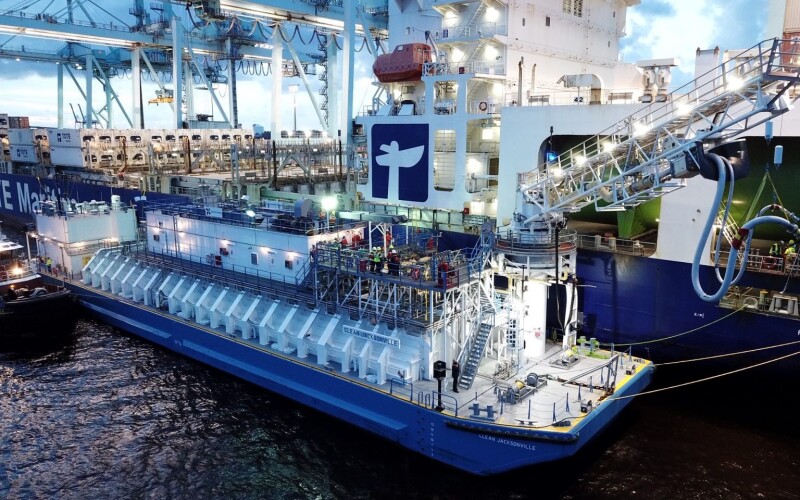The Department of Energy (DOE) has taken a step to ease regulatory hurdles for the use of liquefied natural gas (LNG) as a marine fuel, issuing an order that reverses a previous policy requiring additional oversight for LNG bunkering operations.
The order, which modifies a December 2024 ruling on JAX LNG, clarifies that DOE will no longer exercise jurisdiction under the Natural Gas Act (NGA) over ship-to-ship transfers of LNG for marine fuel use at U.S. ports, in U.S. waters, or in international waters. The only exception is when a receiving vessel is in the territorial waters of a foreign country, at which point the transfer will still be considered an export. JAX LNG retains its authorization to export LNG via ISO containers, DOE said in a statement.
JAX LNG, a small-scale coastal LNG facility at Dames Point, in Jacksonville, Fla. supplies LNG to a range of vessels, including cruise ships, car carriers, petroleum tankers, and container ships. DOE expects the latest action to bolster the adoption of LNG as a marine fuel by streamlining regulatory requirements for ship-to-ship LNG bunkering.
“Today’s action is a significant step in reducing regulatory burdens and helping this important segment of the LNG market continue to grow,” said Tala Goudarzi, principal deputy assistant secretary of the Office of Fossil Energy and Carbon Management.
The decision comes as LNG continues to gain traction as a marine fuel amid tightening emissions regulations for the shipping industry. According to the International Energy Agency’s (IEA) January 2025 Quarterly Gas Report, the number of LNG-fueled vessels is projected to nearly double, exceeding 1,200 ships by 2028.
In December 2024, Seaspan Energy announced that it had performed its first LNG ship-to-ship transfer to a containership in the Port of Long Beach. Seaspan noted the operation launched the company's LNG bunkering services on the West Coast as it plans to expand its offerings to markets in both Long Beach, Calif., and Vancouver, British Columbia.
The LNG transfer was carried out by the 7,600m3 Seaspan Garibaldi, the first of three new LNG bunkering vessels in Seaspan Energy's fleet. The Seaspan Garibaldi will soon be joined by the Seaspan Lions, both of which will serve the growing LNG bunkering market on the West Coast, followed by Seaspan Baker in 2025.
Also in December, Energy Transfer announced a 20-year agreement to supply Chevron with two million tons per annum (mtpa) of LNG from its Lake Charles LNG export facility in Louisiana.
Under the terms of that agreement, Energy Transfer LNG will provide LNG to Chevron on a free-on-board basis. The pricing structure includes a fixed liquefaction fee and a variable component tied to the Henry Hub natural gas benchmark, Energy Transfer said. The statement also noted that obligations of Energy Transfer LNG under the sale and purchase agreement are subject to Energy Transfer LNG taking a final investment decision (FID) as well as the satisfaction of other conditions precedent.
The revised DOE order provides regulatory clarity for the industry, offering LNG suppliers and vessel operators greater certainty in their fueling operations as the market for LNG bunkering expands.




